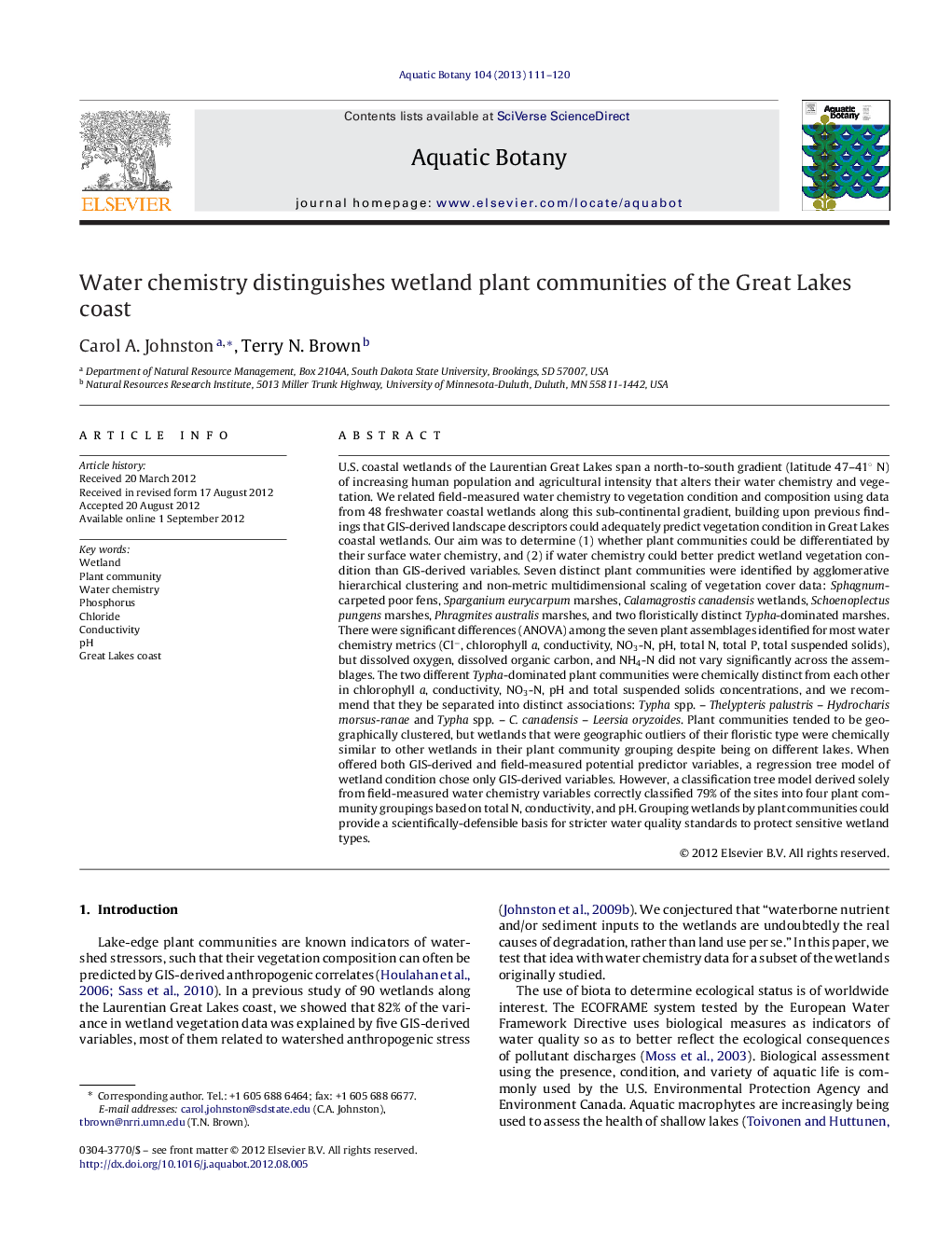| کد مقاله | کد نشریه | سال انتشار | مقاله انگلیسی | نسخه تمام متن |
|---|---|---|---|---|
| 4527973 | 1625838 | 2013 | 10 صفحه PDF | دانلود رایگان |

U.S. coastal wetlands of the Laurentian Great Lakes span a north-to-south gradient (latitude 47–41° N) of increasing human population and agricultural intensity that alters their water chemistry and vegetation. We related field-measured water chemistry to vegetation condition and composition using data from 48 freshwater coastal wetlands along this sub-continental gradient, building upon previous findings that GIS-derived landscape descriptors could adequately predict vegetation condition in Great Lakes coastal wetlands. Our aim was to determine (1) whether plant communities could be differentiated by their surface water chemistry, and (2) if water chemistry could better predict wetland vegetation condition than GIS-derived variables. Seven distinct plant communities were identified by agglomerative hierarchical clustering and non-metric multidimensional scaling of vegetation cover data: Sphagnum-carpeted poor fens, Sparganium eurycarpum marshes, Calamagrostis canadensis wetlands, Schoenoplectus pungens marshes, Phragmites australis marshes, and two floristically distinct Typha-dominated marshes. There were significant differences (ANOVA) among the seven plant assemblages identified for most water chemistry metrics (Cl−, chlorophyll a, conductivity, NO3-N, pH, total N, total P, total suspended solids), but dissolved oxygen, dissolved organic carbon, and NH4-N did not vary significantly across the assemblages. The two different Typha-dominated plant communities were chemically distinct from each other in chlorophyll a, conductivity, NO3-N, pH and total suspended solids concentrations, and we recommend that they be separated into distinct associations: Typha spp. – Thelypteris palustris – Hydrocharis morsus-ranae and Typha spp. – C. canadensis – Leersia oryzoides. Plant communities tended to be geographically clustered, but wetlands that were geographic outliers of their floristic type were chemically similar to other wetlands in their plant community grouping despite being on different lakes. When offered both GIS-derived and field-measured potential predictor variables, a regression tree model of wetland condition chose only GIS-derived variables. However, a classification tree model derived solely from field-measured water chemistry variables correctly classified 79% of the sites into four plant community groupings based on total N, conductivity, and pH. Grouping wetlands by plant communities could provide a scientifically-defensible basis for stricter water quality standards to protect sensitive wetland types.
► Seven floristically distinct wetland plant communities occur along the U.S. Great Lakes coast.
► The plant communities are distinguished by water chemistry: chloride, conductivity, pH, total P.
► Dissolved oxygen, dissolved organic C, and NH4-N in water did not differ across communities.
► Invasive plant communities contained more total P in water than did other communities.
► Geographic outliers of floristic type chemically resembled distant wetland siblings.
Journal: Aquatic Botany - Volume 104, January 2013, Pages 111–120